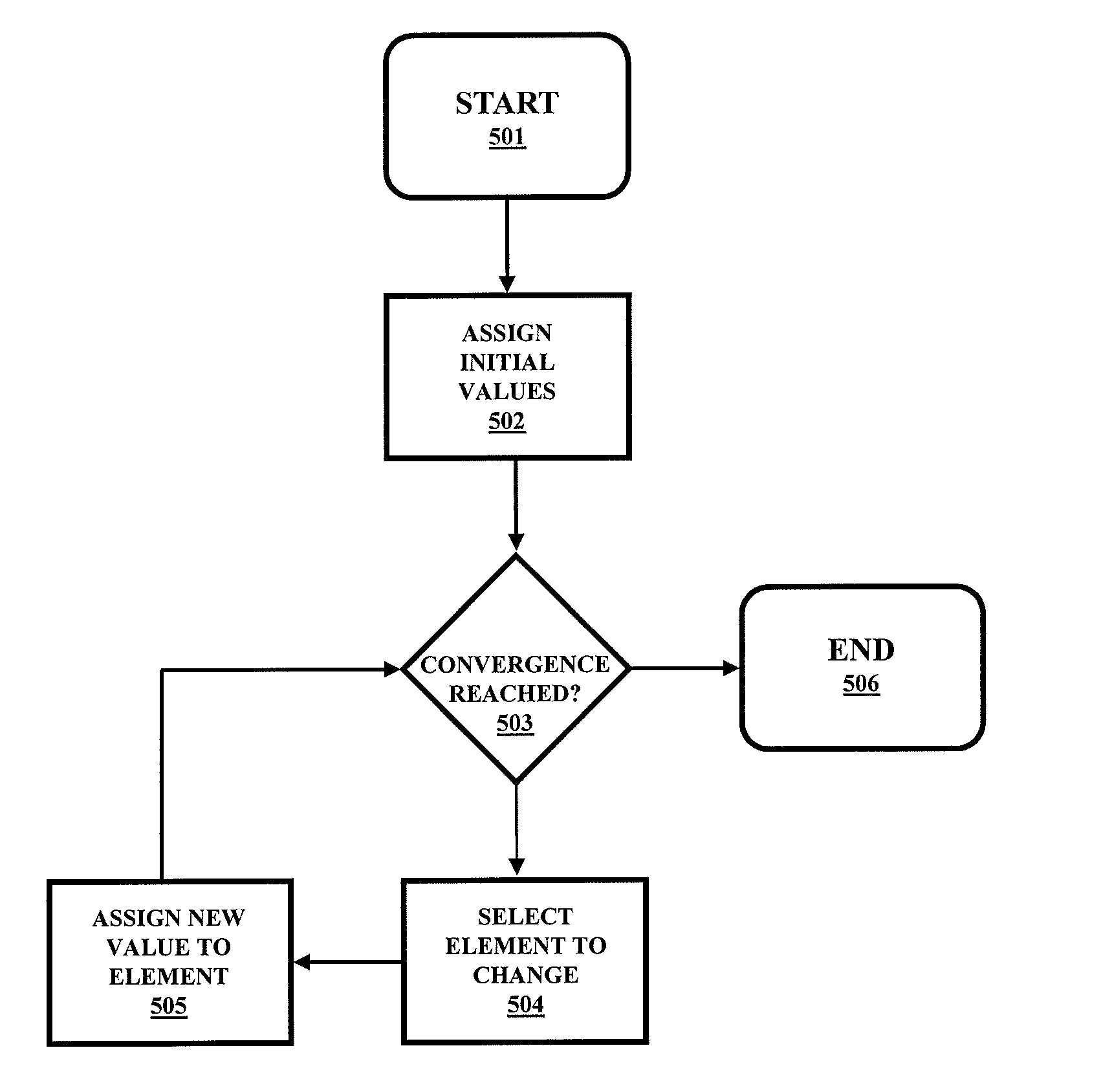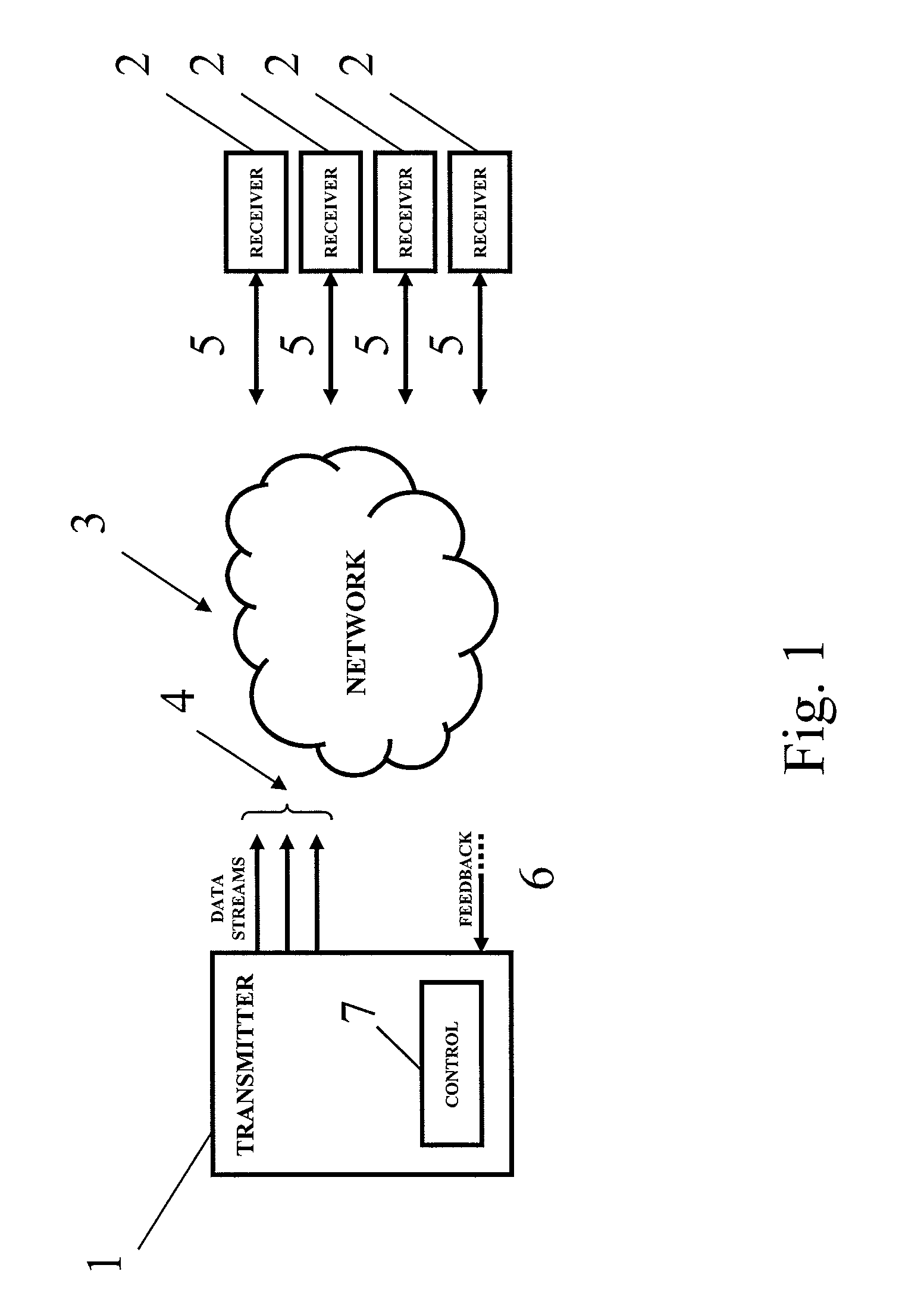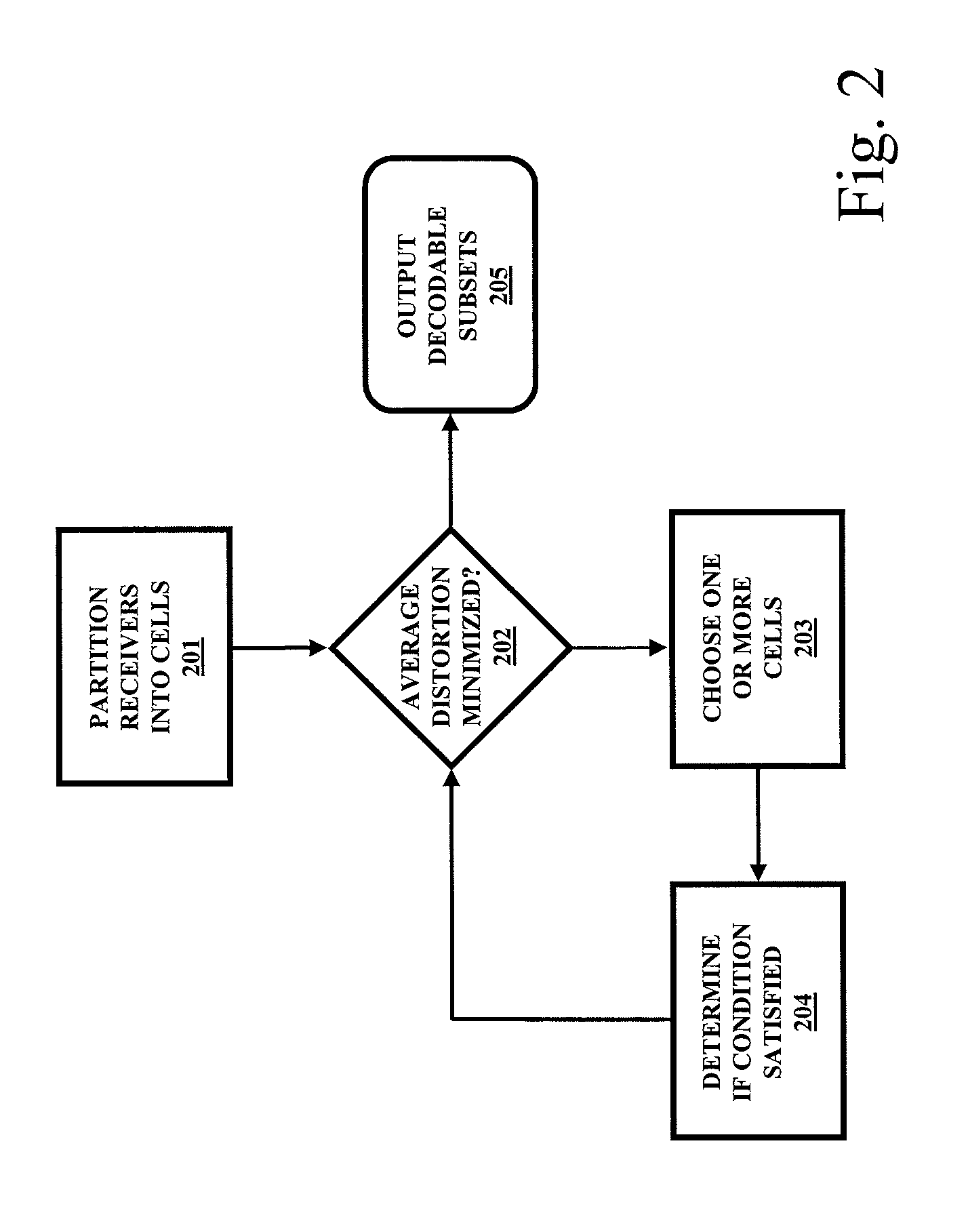Multicast rate optimization
a multicast rate and optimization technology, applied in the field of multicast rate optimization, can solve the problems of time variance of the communications system, load on the communications system, inaccurate estimation of the capacity of the receiver to receive signals, etc., and achieve the effect of facilitating the operation of the sub-encoder
- Summary
- Abstract
- Description
- Claims
- Application Information
AI Technical Summary
Benefits of technology
Problems solved by technology
Method used
Image
Examples
Embodiment Construction
[0032]Preferred embodiments of the present invention will now be described for the purpose of exemplification with reference to the accompanying drawings, wherein like numerals indicate the same elements throughout the views. It should be understood that the present invention encompasses other exemplary embodiments that comprise combinations of features described in the following. Additionally, other exemplary embodiments of the present invention are defined in the appended claims.
[0033]FIG. 1 is a schematic illustration of an exemplary embodiment of the present invention. In FIG. 1, a transmitter is denoted by the numeral 1. However, in the exemplary embodiment shown in FIG. 1, the transmitter includes an encoder. Thus, in the following, for the purpose of explaining the invention, the term transmitter and the term encoder are interchangeably used. However, this should not be construed as limiting the present invention in any way.
[0034]The encoder 1 receives as input one or more si...
PUM
 Login to View More
Login to View More Abstract
Description
Claims
Application Information
 Login to View More
Login to View More - R&D
- Intellectual Property
- Life Sciences
- Materials
- Tech Scout
- Unparalleled Data Quality
- Higher Quality Content
- 60% Fewer Hallucinations
Browse by: Latest US Patents, China's latest patents, Technical Efficacy Thesaurus, Application Domain, Technology Topic, Popular Technical Reports.
© 2025 PatSnap. All rights reserved.Legal|Privacy policy|Modern Slavery Act Transparency Statement|Sitemap|About US| Contact US: help@patsnap.com



